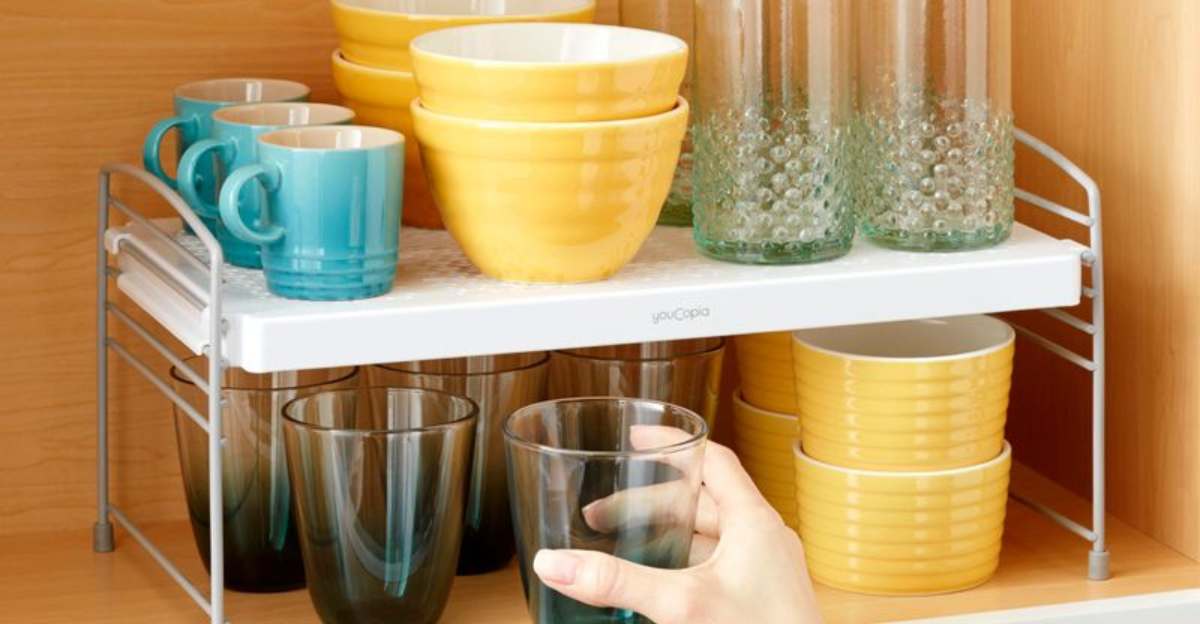Deep shelves can quickly become black holes where items disappear, never to be seen again until spring cleaning.
The struggle to find what you need without creating an avalanche is real! With a few smart strategies, you can transform those cavernous spaces into organized, functional storage areas that make everyday life easier.
1. Add pull-out bins or baskets
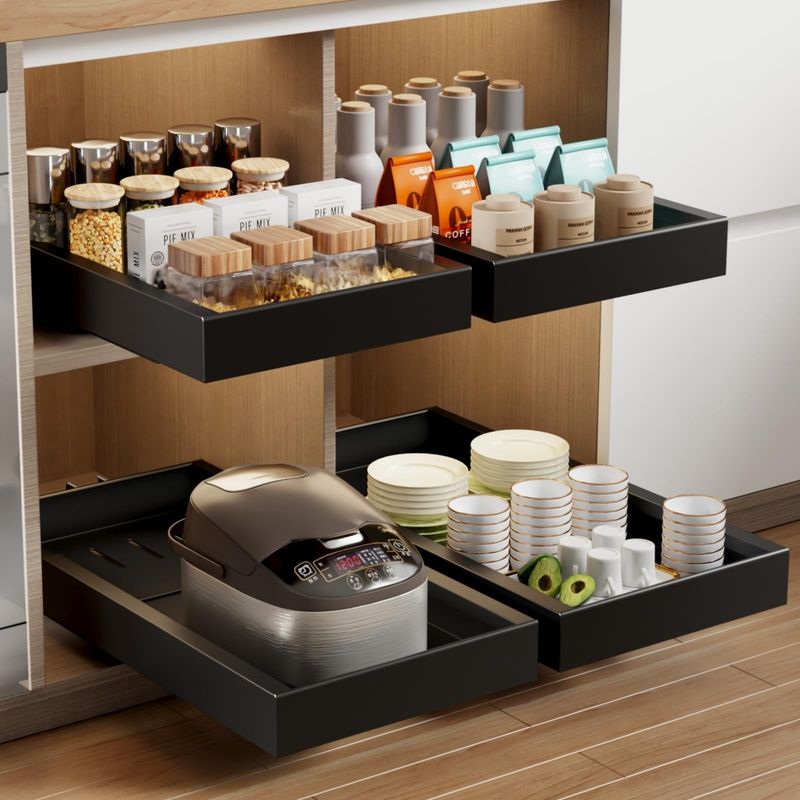
Imagine reaching into the depths of your shelf without disturbing everything in front. Pull-out bins work like mini drawers, allowing easy access to items hiding in the back.
Simply slide them out when needed, grab what you want, and push them back in place. Choose bins with handles for extra convenience and consider clear options to see contents at a glance.
2. Use risers for vertical visibility
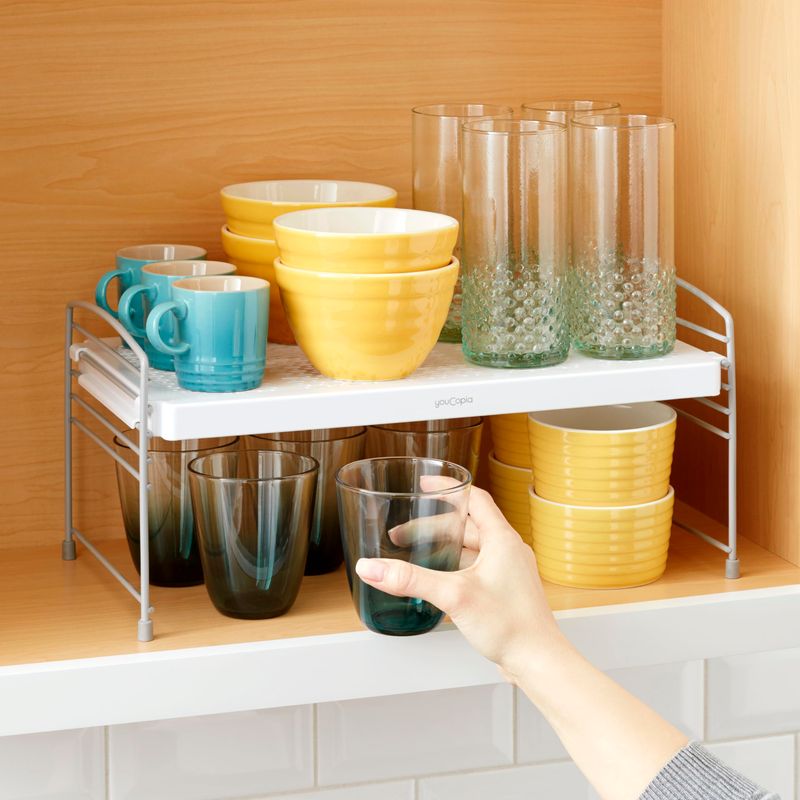
Ever tried playing Jenga with canned goods? Shelf risers eliminate that game forever! By creating stadium-style seating for your items, nothing gets lost behind taller containers.
Perfect for spices, canned goods, or bathroom products. The graduated height arrangement lets you spot everything at once without moving items around, saving time and preventing forgotten purchases.
3. Rotate seasonal items to the back
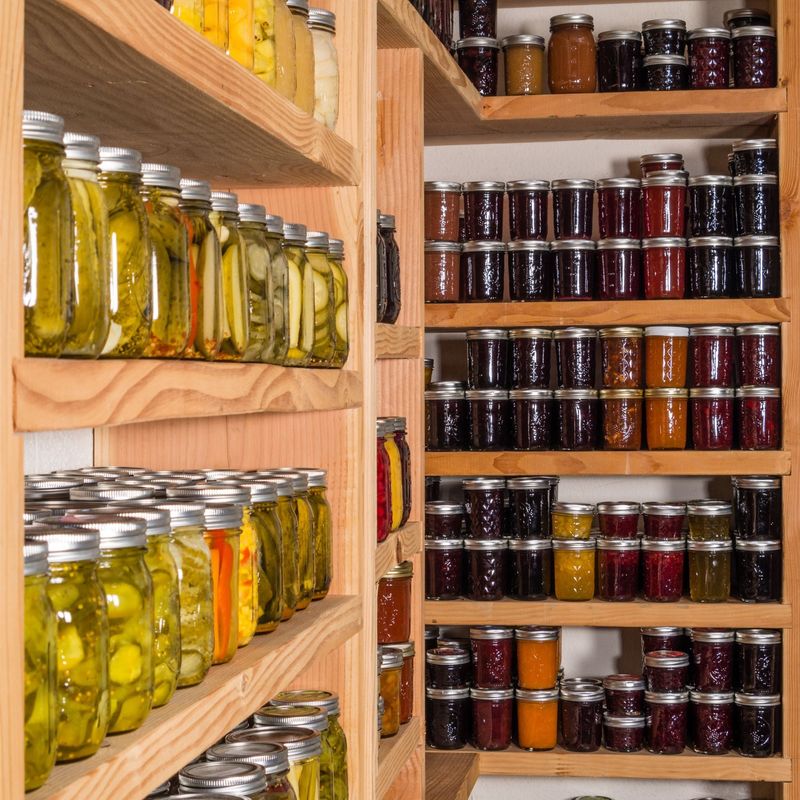
Why waste prime shelf real estate on Christmas cookie cutters in July? Implement a seasonal rotation system by pushing off-season items to the deepest parts of your shelves.
Keep current season needs front and center for easy grabbing. When seasons change, simply swap positions! This practical approach ensures you’re not digging past pool toys in December to find your hot cocoa supplies.
4. Double up with Lazy Susans
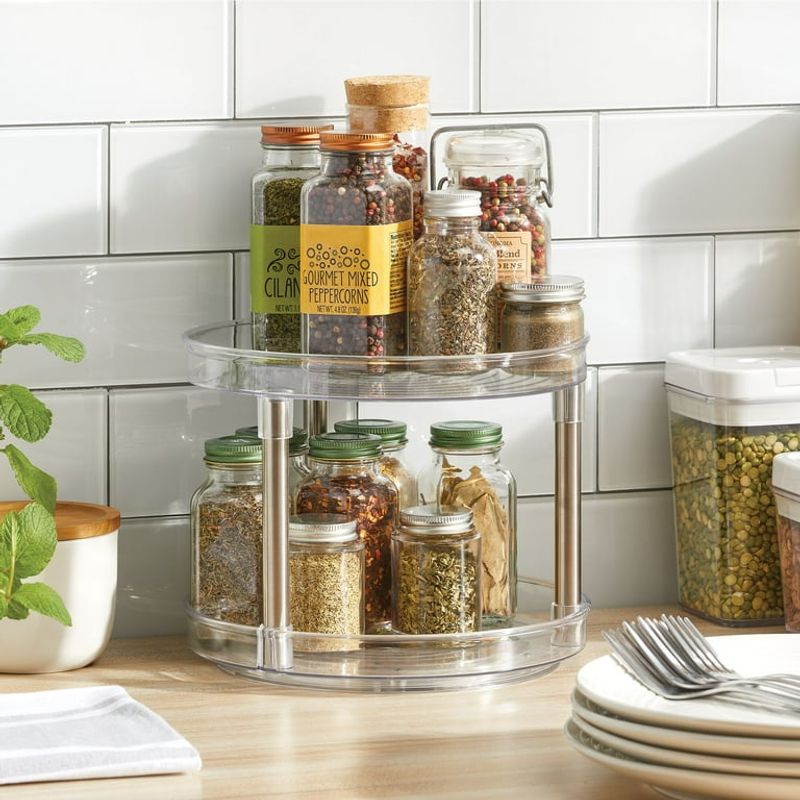
Lazy Susans transform corner cabinets and deep shelves from frustrating dead zones into accessible storage spaces.
Place one in each corner and group similar items together. A quick spin brings everything into view without awkward reaching or knocking things over. Multi-tiered versions maximize vertical space while maintaining the spinning convenience you’ll quickly come to love.
5. Label like a librarian

Channel your inner bookkeeper and create a system Dewey would be proud of. Clear labels transform chaotic shelves into an organized haven where everything has its place.
Face labels outward for instant identification. For deep shelves, consider double-labeling – one on the front edge and another on top for visibility from different angles. Consistent labeling prevents the dreaded “where did I put that?” syndrome that plagues disorganized homes.
6. Divide and conquer with shelf dividers

Stop the domino effect of toppling stacks with vertical shelf dividers. Much like bookends on steroids, these simple tools prevent items from migrating across shelves and creating chaos.
Perfect for keeping stacked towels, sweaters, or papers neatly separated. The physical barriers maintain order even when you remove items from the middle of a stack. Wire dividers work especially well for deep shelves since they don’t block visibility.
7. Put heavy items low, light items high
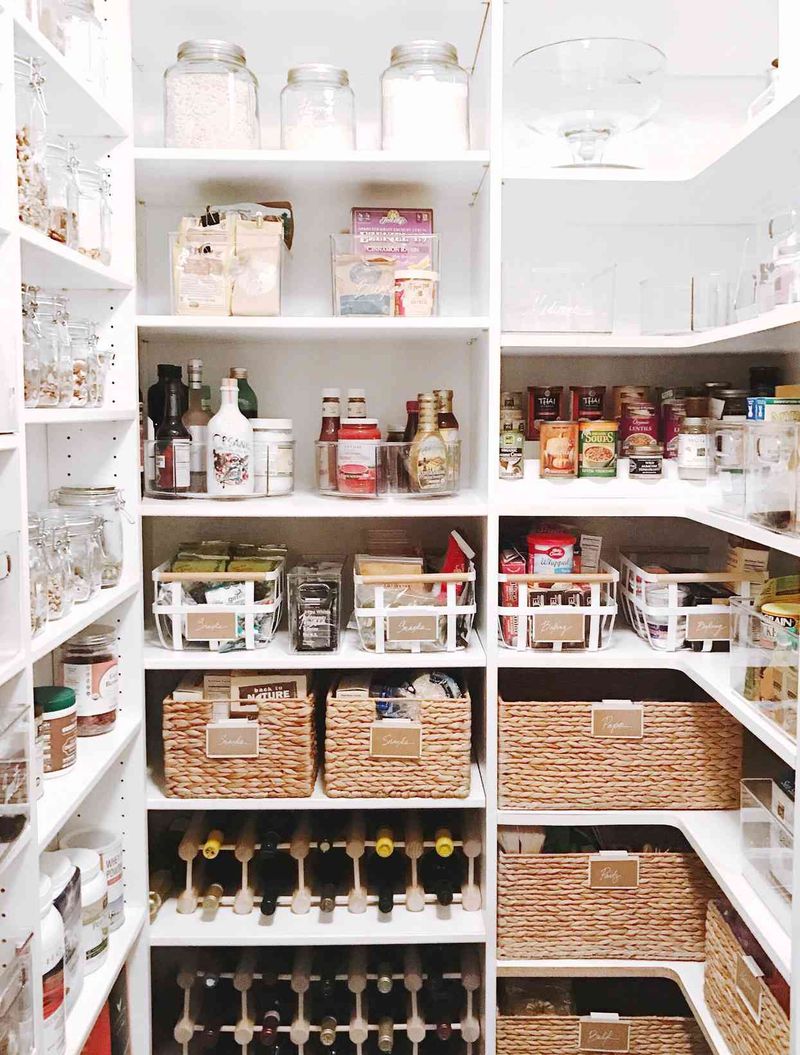
Place weighty items like appliances or bulk goods on bottom shelves to prevent dangerous toppling and make retrieval easier on your back.
Reserve upper shelves for lightweight items you don’t need daily. Following this gravity-friendly approach creates a naturally stable storage system. As a bonus, it usually places frequently used heavier items at the most ergonomic height for regular access.
8. Store by zones, not by chaos
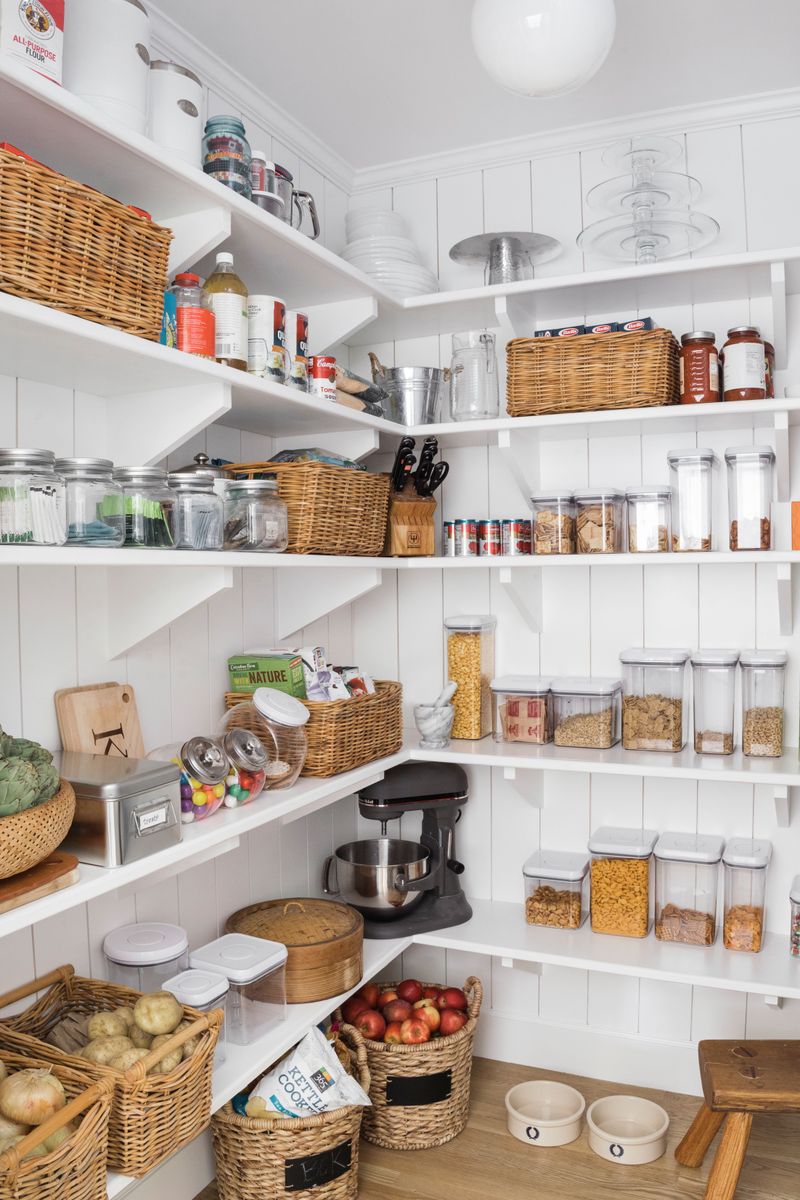
Hunting for ingredients across multiple shelves is a recipe for frustration. Create dedicated zones based on use – baking supplies together, breakfast items in one spot, dinner essentials in another.
For office shelves, group project materials by type or deadline. When items have logical homes, finding what you need becomes intuitive. Zone organization works especially well for deep shelves because it minimizes how often you need to dig to the back.
9. Create sliding trays on runners

Install drawer slides on shelves to create pull-out platforms that bring everything into reach with one smooth motion.
Unlike baskets, flat trays prevent small items from falling through cracks. DIY versions can be made with simple drawer hardware and plywood, while ready-made options come in various sizes. For deep cabinets, look for slides with full extension capabilities.
10. Use clear containers for deep pantry shelves
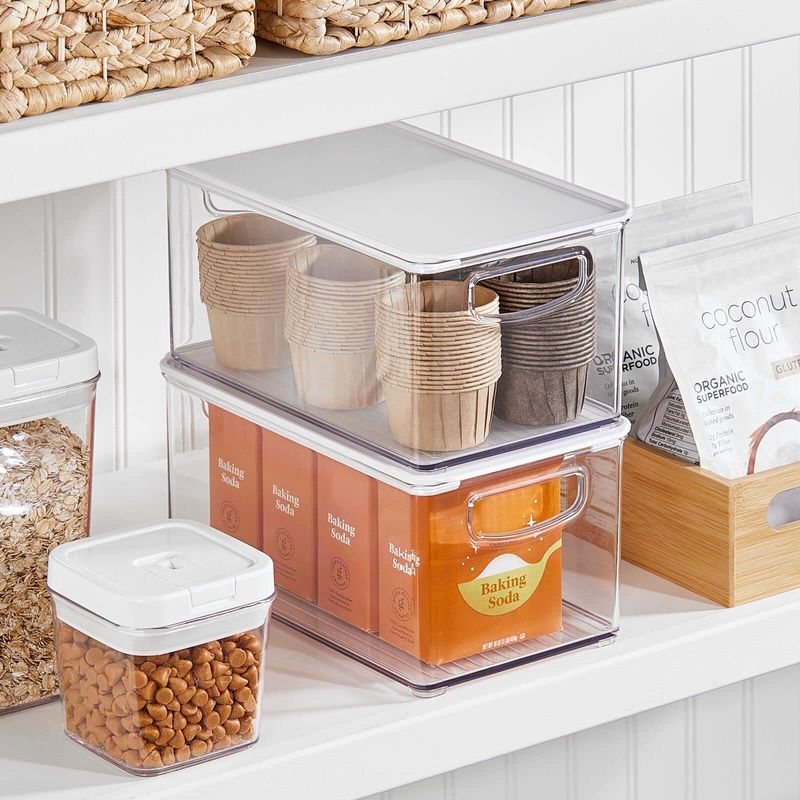
Clear containers eliminate mystery by showing exactly what’s inside and how much remains.
Square or rectangular shapes maximize space efficiency on deep shelves. Air-tight versions keep dry goods fresh longer than original packaging. Bonus points if they stack securely, creating stable towers that make use of vertical space without creating precarious leaning towers.
11. Backstock behind, essentials in front
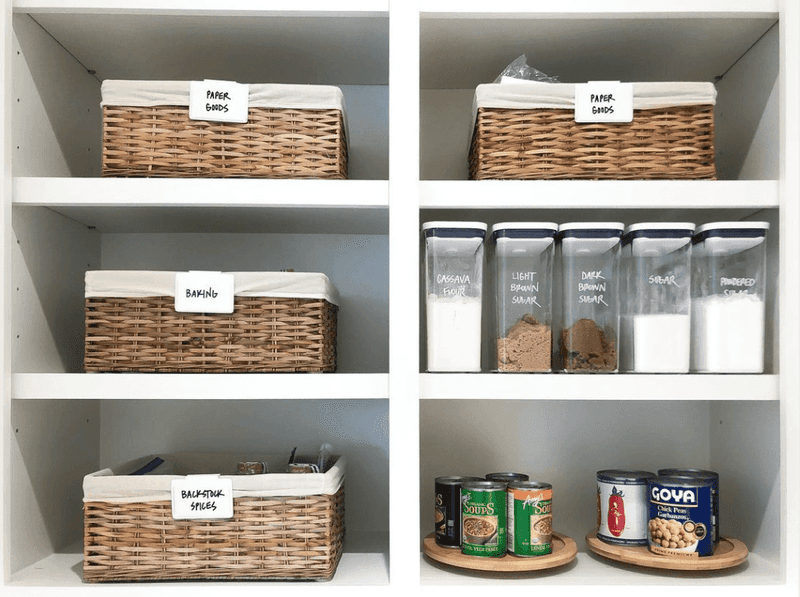
Implement a front-facing system where everyday essentials sit at the shelf edge while extras wait their turn behind.
When you use the last front item, simply pull forward the next one from the back. This rotation method ensures you’re always grabbing the oldest item first, reducing waste from expired products. Perfect for bathroom supplies, canned goods, or craft materials.
12. Stack vertically—but not too high
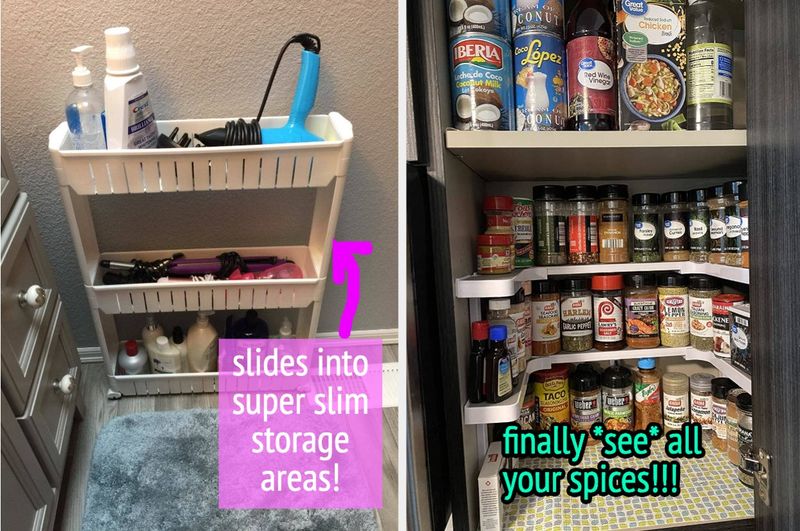
Maximize vertical space on deep shelves by stacking similar items, but keep towers low enough to prevent the dreaded avalanche effect.
A good rule: if removing one item might topple others, your stack is too high. Group flat items like baking sheets or cutting boards in vertical dividers instead of horizontal piles. For containers, limit stacks to three or four to maintain stability.
13. Add lighting inside the shelves
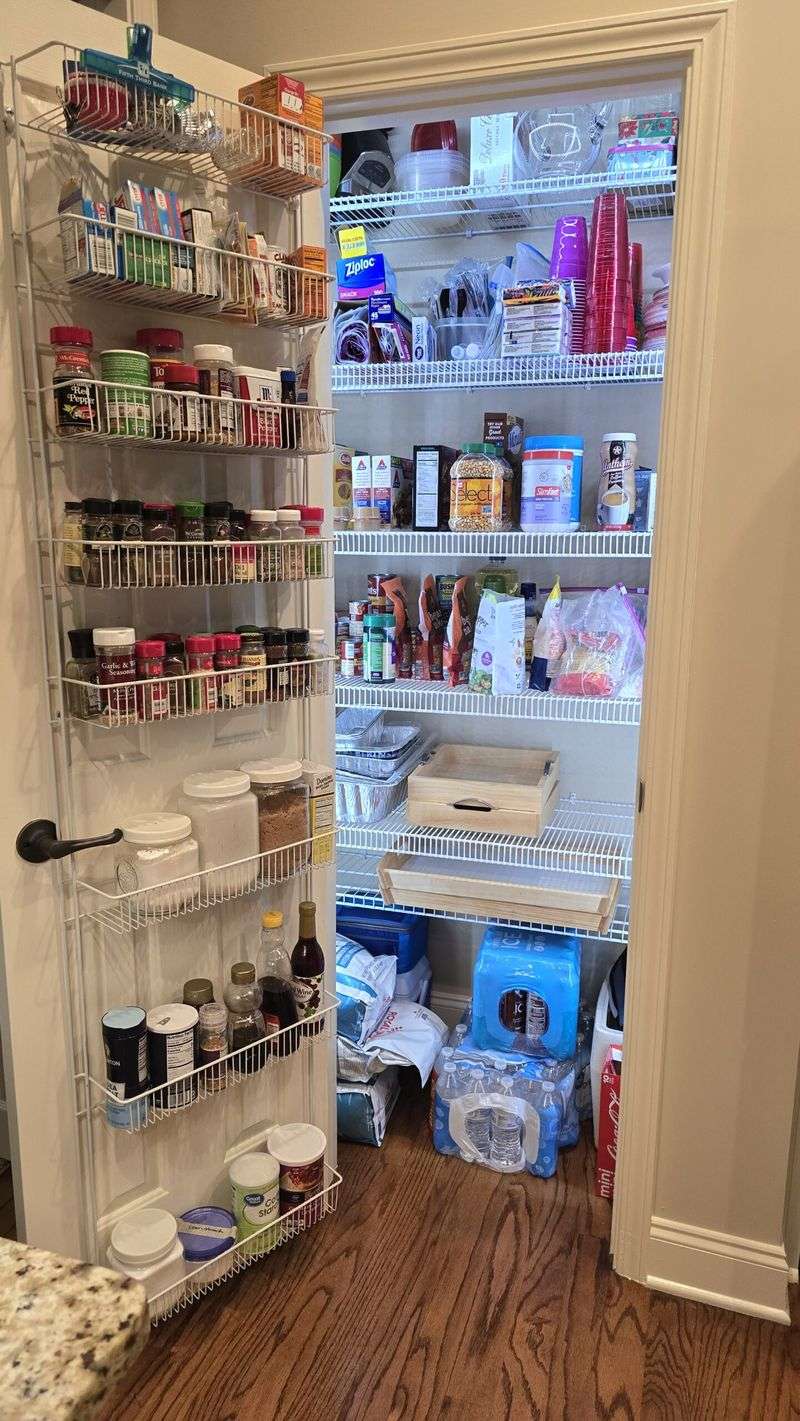
Battery-operated stick-on lights transform dark corners into visible storage space without expensive electrical work.
Motion-sensor versions save battery life by activating only when needed. Place lights strategically to eliminate shadows where items might hide. Suddenly, that back corner where things disappeared becomes as functional as the front edge of your shelf.
14. Use shallow inserts inside deep drawers

Small items scattered across deep drawers create a frustrating jumble. Shallow trays and inserts compartmentalize the chaos into manageable sections without wasting the depth.
Mix and match different-sized containers to create custom organization. Removable inserts let you lift out entire categories at once – perfect for craft supplies or office materials. When everything has a designated spot, items stay put instead of sliding to the back during drawer operation.
15. Audit regularly and keep it lean

Even the best organization system fails under the weight of too much stuff. Schedule quarterly shelf audits to prevent accumulation of items you no longer use or need.
Remove expired products, donate duplicates, and reorganize based on changing needs. Deep shelves tempt us to keep pushing things back until they’re forgotten. Regular review breaks this cycle and ensures your storage system remains functional rather than becoming a glorified time capsule.

